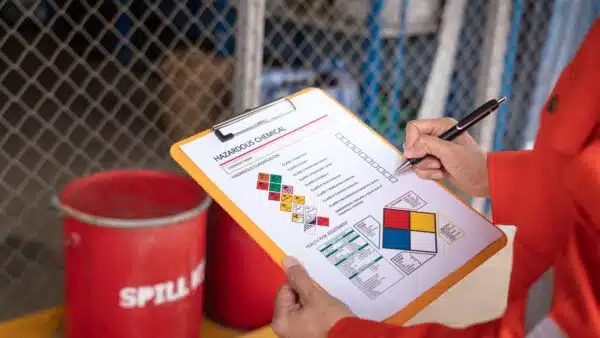
On November 8, 2023, Sound Resource Solutions experienced an explosion at its Shepherd, Texas plant that triggered a fire with large plumes of smoke. Local officials evacuated the surrounding school and farm market issuing a shelter-in-place warning for a five-mile radius. The explosion and fire resulted in one employee having minor burns (The Guardian, 2023). The situation could have been much worse for the community and employees if it were not for the local officials knowing exactly what chemicals are located at the facility.
Have you ever driven by a plant and wondered what they make or what type of chemicals they have onsite? What information is necessary to ensure the correct decisions are made in the event of a fire to keep the community safe? Who has access to this information to make those decisions, and is it made public to the surrounding communities?
The US Emergency Planning and Community Right-to-Know Act, (EPCRA), was established in 1986 to set requirements for federal, state, and local governments, Indian tribes, and industrial facilities regarding emergency planning and “community right-to-know” reporting on hazardous and toxic chemicals (Filippini & Urbano, 2022).
EPCRA’s emergency planning requirements help communities prepare for chemical accidents, including spills, fires, and accidental releases. The information shared with the local officials and communities increases public knowledge and access to information on the chemical presence, use, and release at individual facilities. Improving chemical safety to protect the
community’s population.
EPCRA requires facility owners or operators must submit a safety data sheet (SDS) for each hazardous chemical that meets or exceeds a specified threshold quantity at the facility to the State Emergency Response Commission, the local emergency planning committee, and the local fire department with jurisdiction over the facility.
Can the surrounding communities know what is in the Toxic Release Inventory (TRI) of a plant nearby? Yes, EPCRA requires the information to be made public and available to the community. The link, TRI Search | US EPA, will guide you through the steps to understand what TRI chemicals are in your area.
Companies must follow the EPCRA requirements to ensure the safety of the community and the professionals responding to an explosion, fire, or chemical release to make informed decisions that affect the community. If you would like more information on EPCRA basics, the following link will guide you to an EPCRA fact sheet that will help you understand the requirements in detail and why the rule is needed.
References
The Texas chemical plant explosion caused fire and triggered evacuations; the explosion and subsequent fire happened at a petroleum processing plant in Shepherd, Texas, about an hour outside Houston. (2023). The Guardian (London) Filippini, T., & Urbano, T. (2022). Emergency Planning and Community Right-to-Know Act (EPCRA). In Reference Module in Biomedical Sciences (pp. 1-1)





